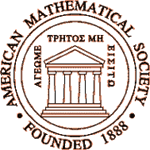
More than 400 mathematicians will gather at the University of Notre Dame on Saturday and Sunday (April 8-9) for the 2006 Spring Central Sectional Meeting of the American Mathematical Society.
A conference highlight is the 2006 Erds Memorial Lecture,Inhomogeneous Random Graphs,by Bla Bollobás, professor at theUniversityofMemphisand fellow ofTrinityCollege,Cambridge, at5:10 p.m.Saturday in Room 101 DeBartolo Hall. The lecture is free and open to the public.
The Erds lecture is an annual invited address made possible by a fund created by Andrew Beal, aDallasbanker and mathematics enthusiast. The lecture is named for the late, prolific mathematician Paul Erds, who published more than 1,500 papers and developed the theory of random graphs.
A random graph is a collection of points, called vertices, in which some or all of the points are connected by line segments, called edges. Graphs can be used to model networks such as the World Wide Web (in which Web pages are the vertices and links between pages are the edges) and social interactions (in which people are the vertices and edges connect people who know each other). In one interesting graph, the vertices correspond to movie stars and two vertices are connected by an edge if the stars involved have worked together on a film. The graph is the basis for the trivia gameSix Degrees of Kevin Bacon.
Bollobáslecture concerns graphs in which, for each pair of vertices, whether an edge is drawn between them is decided at random. These random decisions are made in such a way that there can be a wide variation in the number of edges that come out of the different vertices in a graph (just as there can be a wide variation in the number of links to a given Web page or in the size of a given persons social network). The study of random graphs has led to many interesting discoveries about the properties of graphs in general.
More information about the sectional meeting can be found at http://www.ams.org/amsmtgs/2130_program.html .
* Contact: * _Bill Dwyer, chair, Department of Mathematics, 574-631-6438, dwyer.1@nd.edu
_
TopicID: 16704